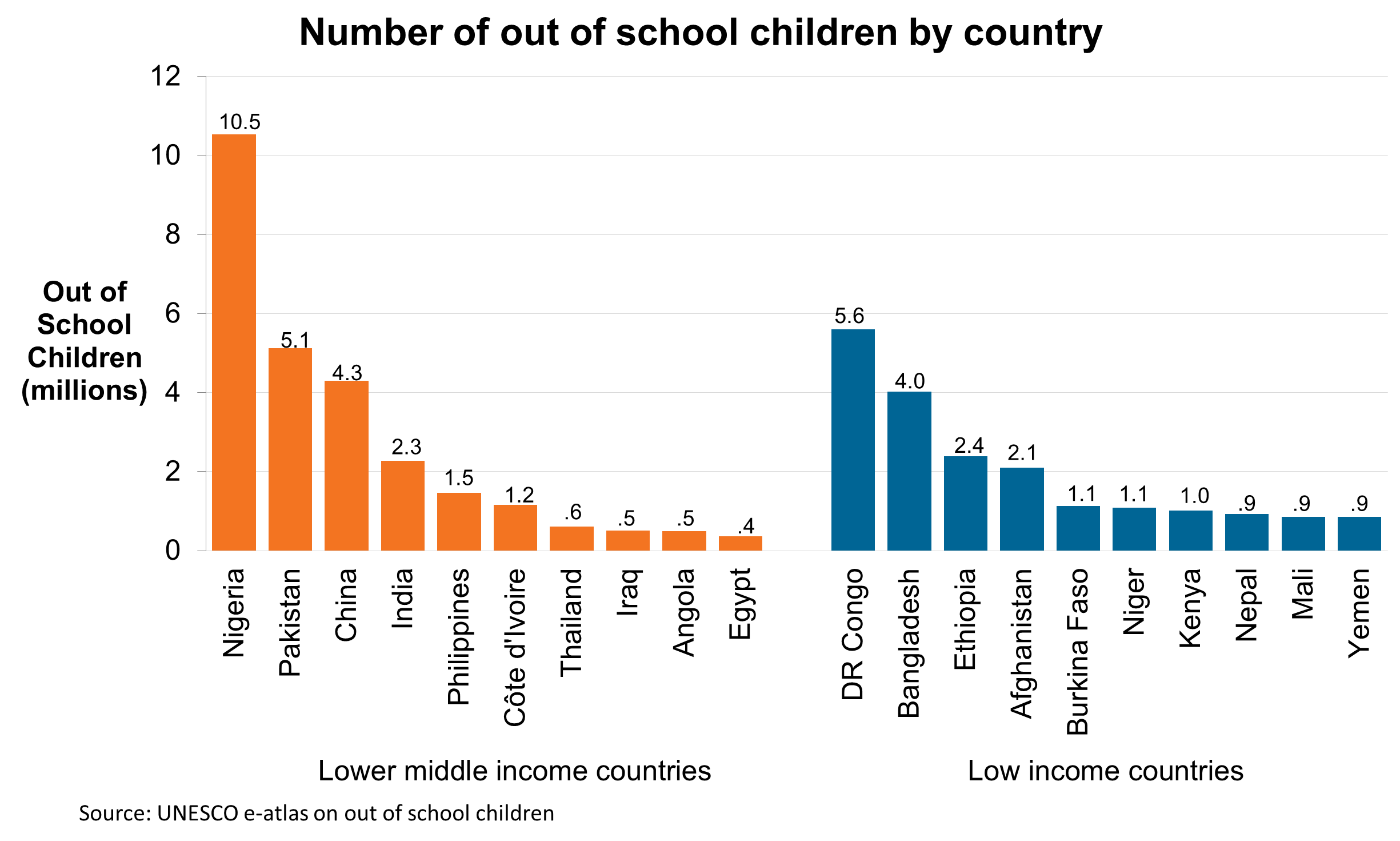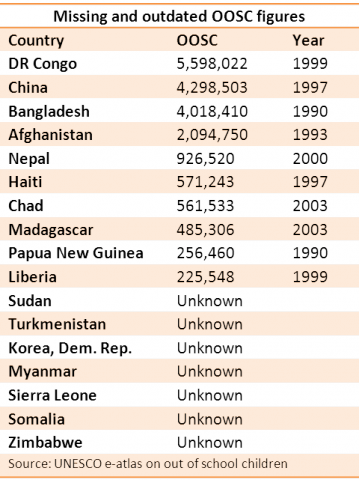You are here
Where are the out of school children?
An exercise in determining the dimensions of educational exclusion
EPDC is currently exploring the measurement of the global number of out of school children (OOSC), with a particular focus on analyzing the discrepancies between household survey and administrative data, which in some countries can be quite substantial*. The following breakdown examines the available administrative estimates of OOSC reported by UNESCO only. In this graphic we use the World Bank’s income groupings, which are based on country gross national income per capita. Some trends to note are that:

- Over 90% of out of school children are from low and lower middle income countries.
- Among lower middle income countries, Nigeria and Pakistan together account for over 50% of the number of out of school children.
- China and India, the two countries with populations of over a billion, account for 23% of the total in lower middle income countries.
- In low income countries, the Democratic Republic of Congo and Bangladesh together account for 37% of the number of out of school children, with Ethiopia and Afghanistan close behind.
It is interesting to note that the number of out of school children is more evenly spread across low income countries, with the top four countries accounting for 54% of the total number, compared to 76% in lower middle income countries.
The most recent global estimate of OOSC published by UNESCO is approximately 61 million children of primary school age (UNESCO, 2012). This is a decline from previous a previous figure of 115 million (UNESCO, 2005). However, it is important to note that many important potential contributors to the global OOSC estimate are either missing or have outdated information, as presented in the table below. For many of these countries, OOSC estimates can be obtained from measures of school attendance collected by household surveys. EPDC is working on filling these gaps and producing a fuller picture of school non-participation in the low-income and lower-middle income states. Stay tuned for more EPDC analysis on this topic.
*According to UNESCO Institute of Statistics estimate for India, for example, there were 2,278,322 primary aged children out of school in 2008. Data from the Demographic Health Survey from 2006, however, indicate that there were 23.4 million primary-school aged children not attending school.
 Discussion Questions
Discussion Questions
-
How can the research community come to a more nuanced understanding of the scope of the challenge in school participation across the globe?
-
What can be done to strengthen the measurement of OOSC and identify effective policy to tackle this challenge?

Add new comment